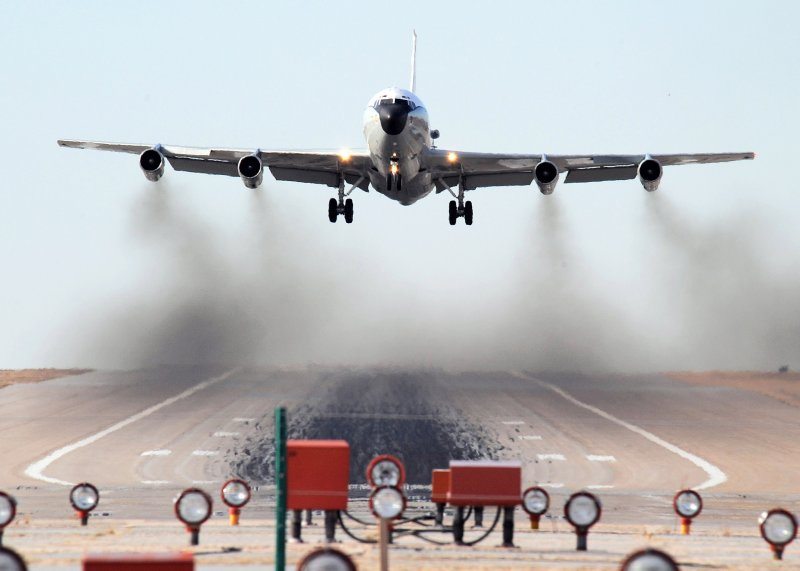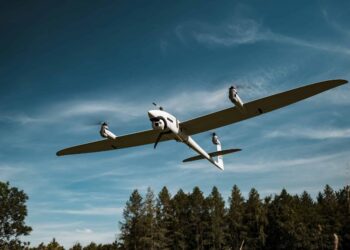At any time of the day or night, on any day of the year, if a nuclear device explodes anywhere on Earth, a Defense Department network established in 1947 will know about it.
That was the year Army Gen. Dwight D. Eisenhower directed the Army Air Corps to develop such a capability, and the U.S. Atomic Energy Detection System has evolved over 64 years into a one-of-a-kind global web of sensors that see, feel, hear and sniff out nuclear explosions that occur under land or sea, in the atmosphere or in space.
The Air Force detection system and the job of monitoring three nuclear treaties — the 1963 Limited Test Ban Treaty, the 1974 Threshold Test Ban Treaty and the 1976 Peaceful Nuclear Explosions Treaty — in 1980 became a responsibility of the U.S. Air Force Technical Applications Center, called AFTAC, at Patrick Air Force Base, Fla.
When the system detects a nuclear event, AFTAC scientists analyze it and report findings to national command authorities through U.S. Air Force headquarters.
David O’Brien is AFTAC’s chief scientist.
“Our responsibility is to ensure that foreign nations are adhering to the provisions of those treaties,” O’Brien said.
To monitor the atmosphere and space, he said, the U.S. Atomic Energy Detection System, called USAEDS, has sensors aboard more than 20 satellites that make up the Global Positioning System and the infrared-sensing satellites that make up the Defense Support Program.
“The latter,” O’Brien said, “are what the United States uses to detect launches of intercontinental ballistic missiles.”
Multiple sensors on all those satellites “look for phenomenology from a nuclear explosion that occurs in space or in the atmosphere,” he added, “whether it’s nuclear radiation or the flash from the fireball.”
The network’s five hydroacoustic stations detect undersea nuclear explosions.
“Those are just underwater microphones, and they listen for the explosion that goes off underwater,” the scientist said. “By detecting the explosions on more than one underwater microphone, we can triangulate where it occurred.”
But the workhorse since the treaties came into effect to ban atmospheric nuclear testing, O’Brien said, has been the underground nuclear monitoring capability.
“Those sensors are seismic, and the reason they’re seismic is that when a large explosion occurs underground, it creates a signature that looks just like an earthquake,” he said.
Infrasound sensors measure changes in the atmosphere generated by very-low-frequency acoustic waves that can come from above-ground nuclear explosions.
USAEDS still supplements some of its 40 seismic stations with infrasound, the scientist said, and in the 1960s used infrasound as the main way to detect nuclear explosions in the atmosphere.
“But once we were able to get sensors on satellites,” he said, “that gave us a much better capability.”
When the program first began, its only sensor, an air sampler, flew on a B-29 aircraft over the Pacific Ocean. In 1949, flying between Alaska and Japan, the sampler detected debris from the first Russian atomic test.
Today the system uses another aircraft, a WC-135, in a program called Constant Phoenix to collect air samples from areas where nuclear explosions have occurred.
If there is a nuclear explosion, O’Brien said, “we will (use meteorology) to project where radioactive debris would go. Then when it gets into international airspace, the aircraft can go to that spot.”
The plane collects particles so analysts on the ground can test them to see if they contain radionuclides, or radioactive elements.
The plane also collects radioactive gases, especially radioactive xenon, which is a good indicator that a nuclear explosion has occurred.
With all these sensors, the U.S. Atomic Energy Nuclear Detection System is the only network that operates 24 hours a day, seven days a week, but it isn’t the only global detection system.
In 1996, the United Nations General Assembly adopted the provisions of the Comprehensive Nuclear Test Ban Treaty. One major provision prohibited nuclear explosions anywhere, by anyone.
Another provision described a 337-facility International Monitoring System that would scan the earth for nuclear treaty violations. The IMS facilities include seismic, hydroacoustic, infrasound and radionuclide stations, but no satellite sensors.
Most of the world’s countries have signed and ratified the treaty. Three countries that have not signed the treaty have since tested nuclear devices — India and Pakistan in 1998 and North Korea in 2006.
The treaty has not yet entered into force. Several more countries must ratify the treaty before that happens. Until it does enter into force, some of the IMS monitoring stations operate 24 hours a day, but many do not.
U.S. officials have signed, but not yet ratified, the treaty, and it has helped develop the International Monitoring System, O’Brien said.
The IMS architects “were starting from scratch in the mid-1990s, and we had many years of experience in these kinds of systems,” he said.
“So they came to us asking for any advice that would help them avoid the pitfalls of putting a new system in,” the scientist added.
The experts at USAEDS advised the monitoring system builders on worldwide logistics involved in establishing such a system and onsite installations.
USAEDS contributes the data from many of its seismic and hydroacoustic stations to the International Monitoring System.
“Outside of the USAEDS,” O’Brien said, “the United States through the Office of the Secretary of Defense contributes seismic, infrasound and radionuclide stations to the IMS.”
As a signatory to the Comprehensive Nuclear Test Ban Treaty, the United States is entitled to and receives all the data that the International Monitoring System produces.
“We participate in all their international meetings, and we have since (the system’s) inception. They occasionally come here and visit,” O’Brien said. “I think both the IMS and ourselves are right at the state of the art of any technology that is practical for use in detecting nuclear explosions.”










